Using AI to Enhance Data Engineering and ETL – The Intelligent Data Accelerator
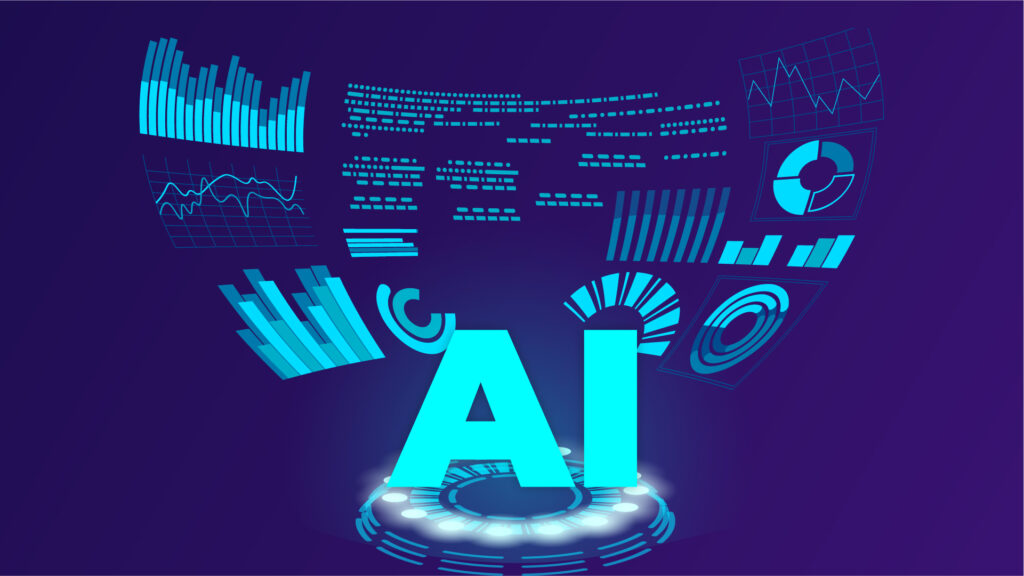
As data analytics becomes highly important to improve enterprise business performance, data aggregation (from across the enterprise and from outside sources) and adequate preparation of this data stand as critical phases within the analytics lifecycle. An astonishing 40-60% of the overall effort in an enterprise is dedicated to these foundational processes. It is here that the raw datasets are extracted from source systems, and cleaned, reconciled, and enriched before they can be used to generate meaningful insights for informed decision-making. However, this phase often poses challenges due to its complexity and the variability of data sources. Enter Artificial Intelligence (AI). It holds the potential to significantly enhance how we do data engineering and Extract, Transform, Load (ETL) processes. Check out our AI enabled ETL accelerator solution i.e. Intelligent Data Accelerator here. In this blog, we delve into how AI can enhance data engineering and ETL management. We focus on its pivotal role in Setting up initial ETLs and Managing ongoing ETL processes efficiently. AI-Powered Indirection to Bridge the Gap between Raw Data and ETL AI introduces a remarkable concept of indirection between raw datasets and the actual ETL jobs, paving the way for increased efficiency and accuracy. We’ll address two major use cases hold promise to begin reshaping the data engineering landscape. Automating Initial ETL Setup through AI Training Consider the scenario of media agencies handling large amounts of incoming client data about campaigns, click stream information, media information, and so on. Traditionally, crafting ETL pipelines for such diverse data sources when new clients are onboarded can be time-consuming and prone to errors. This is where AI comes to the rescue. By training AI models on historical ETL outputs, organizations can empower AI to scrutinize incoming datasets automatically. The AI model adeptly examines the data, ensuring precise parsing and correct availability for ETL execution. For instance, an AI model trained on past campaigns’ performance data can swiftly adapt to new datasets, extracting crucial insights without manual intervention. This leads to accelerated decision-making and resource optimization, exemplifying how AI-driven ETL setup can redefine efficiency for media agencies and beyond. AI Streamlining Ongoing ETL Management The dynamic nature of certain datasets, such as insurance claims from diverse sources, necessitates constant adaptation of ETL pipelines. Instead of manual intervention each time data sources evolve, AI can play a pivotal role. By employing AI models to parse and organize incoming data, ETL pipelines can remain intact while the AI handles data placement. In the insurance domain, where claims data can arrive in various formats, AI-driven ETL management guarantees seamless ingestion and consolidation. Even in our previous example where a media agency receives campaign data from clients, this data can frequently change as external systems change and new ones are added. AI can handle these changes easily, thus dramatically improving efficiency. This intelligent automation ensures data engineers can focus on strategic tasks rather than reactive pipeline adjustments. The result? Enhanced agility, reduced errors, and significant cost and time savings. Domain-Specific Parsers: Tailoring AI for Precise Data Interpretation To maximize the potential of AI in data engineering, crafting domain-specific parsers becomes crucial. These tailored algorithms comprehend industry-specific data formats, ensuring accurate data interpretation and seamless integration into ETL pipelines. From medical records to financial transactions, every domain demands a nuanced approach, and AI’s flexibility enables the creation of custom parsers that cater to these unique needs. The combination of domain expertise and AI prowess translates to enhanced data quality, expedited ETL setup, and more reliable insights. A Glimpse into the Future As AI continues to evolve, the prospect of fully automating ETL management emerges. Imagine an AI system that receives incoming data, comprehends its structure, and autonomously directs it to the appropriate target systems. This vision isn’t far-fetched. With advancements in machine learning and natural language processing, the possibility of end-to-end automation looms on the horizon. Organizations can potentially bid farewell to the manual oversight of ETL pipelines, ushering in an era of unparalleled efficiency and precision. Next Steps AI’s potential utility on data engineering and ETL processes is undeniable. The introduction of AI-powered indirection revolutionizes how data is processed, from setting up initial ETLs to managing ongoing ETL pipelines. The role of domain-specific parsers further enhances AI’s capabilities, ensuring accurate data interpretation across various industries. Finally, as the boundaries of AI continue to expand, the prospect of complete ETL automation does not seem too far away. Organizations that embrace AI’s transformative potential in this area stand to gain not only in terms of efficiency but also in their ability to accelerate insights generation. Take a look at Ignitho’s AI enabled ETL accelerator which also includes domain specific partners. It can be trained in as little as a few weeks for your domain. Also read about Ignitho’s Intelligent Quality Accelerator, the AI powered IQA solution.
What is Microsoft Fabric and Why Should You Care

In the fast-paced world of business, enterprises have long grappled with the challenge of weaving together diverse tools and technologies for tasks like business intelligence (BI), data science, and data warehousing. This much needed plumbing often results in increased overheads, inefficiencies, and siloed operations. Recognizing this struggle, Microsoft is gearing up to launch the Microsoft Fabric platform on its Azure cloud platform, promising to seamlessly integrate these capabilities and simplify the way enterprises handle their data. Power of Integration Imagine a world where the various threads of data engineering, data warehousing, Power BI, and data science are woven together into a single fabric. This is the vision behind Microsoft Fabric. Instead of managing multiple disjointed systems, enterprises will be able to orchestrate their data processes more efficiently, allowing them to focus on insights and innovation rather than wrestling with the complexities of integration. This is also the premise behind Ignitho’s Customer Data Platform Accelerator on the Domo platform. Domo has already integrated these capabilities. And Ignitho has also enhanced the platform with domain specific prebuilt AI models and dashboards. Now enterprises have more choice as platforms such as Microsoft and Snowflake adopt a similar approach going into the future. What is Microsoft Fabric Comprised Of MS Fabric is still in Beta but will soon bring together all of the typical capabilities required for a comprehensive enterprise data and analytics strategy. Data Engineering With Microsoft Fabric, data engineering becomes an integral part of the bigger picture. These tasks are generally about getting data from the multiple source systems, transforming the data, and loading it into a target data warehouse from where insights can be generated. For instance, think of a retail company that can easily combine sales data from different stores and regions into a coherent dataset, enabling them to identify trends and optimize their inventory. Data Warehouse A powerful data warehouse is not conceptually at the heart of Microsoft Fabric. Azure synapse is more logically integrated under the Fabric platform umbrella so can be deployed and managed more easily. Rather than having a mix and match approach, Fabric makes it semantically easier to simply connect data engineering to the data warehouse. For example, a healthcare organization can consolidate patient records from various hospitals, enabling them to gain comprehensive insights into patient care and outcomes. Power BI Microsoft’s Power BI, a popular business analytics tool, now seamlessly integrates with the Fabric platform. This means that enterprises can both deploy and manage Power BI more simply, along with data integrations and the data warehouse, to create insightful reports and dashboards. Consider a financial institution that combines data from different departments to monitor real-time financial performance, enabling quicker decision-making. These implementations of Power BI will now naturally gravitate to a data source that is on MS Fabric depending on the enterprise data and vendor strategy. In addition, the AI features on Power BI are also coming up soon. Data Science Building on the power of Azure’s machine learning capabilities, Microsoft Fabric supports data science endeavors. The important development now is that data scientists can access and analyze data directly from the unified platform, enhancing the deployment simplicity and speed of model development. For instance, an e-commerce company can utilize data science to predict customer preferences and personalize product recommendations. These models are now more easily integrated with MS Power BI. Important Considerations for Enterprises MS Fabric promises to be a gamechanger when it comes to enterprise data strategy and analytics capability. But with any new capability comes a series of important decisions and evaluations that have to be made. Evaluating Architecture and Migration As Microsoft Fabric is still in its beta phase, enterprises should assess their existing architecture and create a migration plan if necessary. Especially, if you haven’t yet settled on an enterprise data warehouse or are in the early stages of planning your data science capability, then MS Fabric needs a good look. While there might be uncertainties during this phase, it’s safe to assume that Microsoft will refine the architecture and eliminate silos over time. API Integration While Microsoft Fabric excels in bringing together various data capabilities, it’s essential to note that it currently still seems to lack a streamlined solution for API integration of AI insights, not just the data in the warehouse. Enterprises should consider this when planning the last mile adoption of AI insights into their processes. However, just like we have done this in Ignitho’s CDP architecture, we believe MS will address this quickly enough. Centralization It’s expected that Microsoft’s goal is to provide a single platform on its own cloud where enterprise can meet all their needs. However, both from a risk management perspective, and those who favor a best of breed architecture, the tradeoffs must be evaluated. In my opinion, the simplicity that MS Fabric provides is an important criterion. That’s because over time most platforms will converge towards similar performance and features. And any enterprise implementation will require custom workflows and enhancements unique to their business needs and landscape. Final Thoughts If your enterprise relies on the Microsoft stack, particularly Power BI, and is in the process of shaping its AI and data strategy, Microsoft Fabric deserves your attention. By offering an integrated platform for data engineering, data warehousing, Power BI, and data science, it holds the potential to simplify operations, enhance decision-making, and drive innovation. MS still has some work to do to enable a better last mile adoption, and simplify the stack further, but we can assume that MS is treating that with high priority too. In summary, the promise that the Microsoft Fabric architecture holds for streamlining data operations and enabling holistic insights makes it a strong candidate for businesses seeking efficiency and growth in the data-driven era. Contact us for an evaluation to help you with your data strategy and roadmap. Also read our last blog on generative ai in power bi.
The Intersection of CDP and AI: Revolutionizing Customer Data Platforms
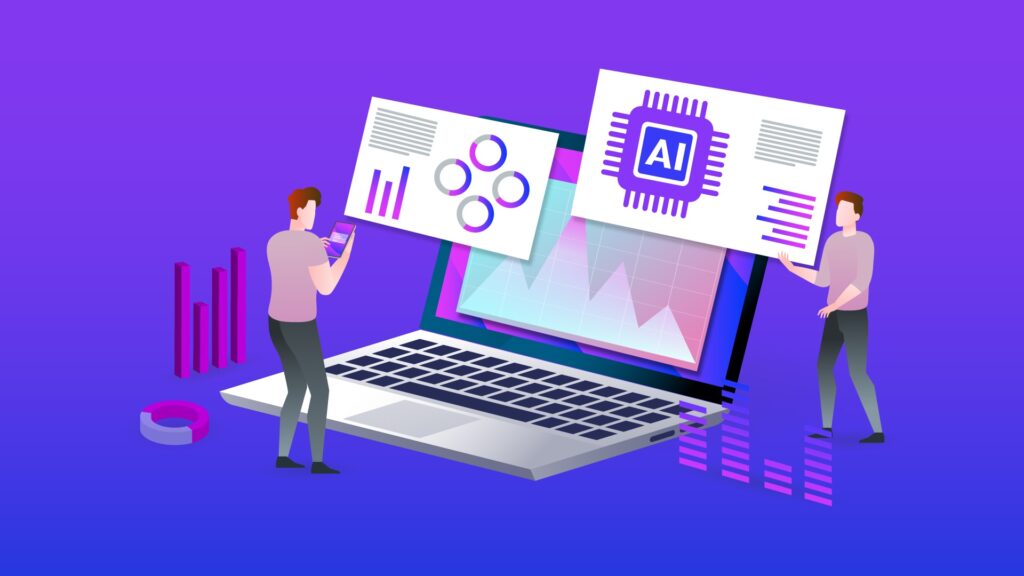
We recently published a thought leadership piece on DZone, and are excited to provide you with a concise overview of the article’s key insights. Titled “The Intersection of CDP and AI: How Artificial Intelligence Is Revolutionizing Customer Data Platforms”, our blog explores the use of AI in CDP and offers valuable perspectives on How AI-driven insights within Customer Data Platforms (CDPs) revolutionize personalized customer experiences. In today’s data-driven world, Customer Data Platforms (CDPs) have become indispensable for businesses seeking to harness customer data effectively. By consolidating data from various sources, CDPs offer valuable insights into customer behavior, enabling targeted marketing, personalized experiences, and informed decision-making. The integration of Artificial Intelligence (AI) into CDPs further amplifies their benefits, as AI-powered algorithms process vast data sets, identify patterns, and extract actionable insights at an unprecedented scale and speed. AI enhances CDP capabilities by automating data analysis, prediction, and personalization, resulting in more data-driven decisions and personalized customer engagement. AI Integration in CDP: Improving Data Collection, Analysis, and Personalization The key areas where AI enhances CDPs are data collection, analysis, and personalization. AI streamlines data collection by reducing manual efforts and employing advanced pattern matching and recommendations. It enables real-time data analysis, identifying patterns and trends that traditional approaches might miss. Through machine learning techniques, AI-enabled CDPs provide actionable insights for effective decision-making, targeted marketing campaigns, and proactive customer service. AI-driven personalization allows businesses to segment customers more effectively, leading to personalized product recommendations, targeted promotions, and tailored content delivery, fostering customer loyalty and revenue growth. Architectural Considerations for Implementing AI-Enabled CDPs To implement AI-enabled CDPs successfully, careful architectural considerations are necessary. Data integration from multiple sources requires robust capabilities, preferably using industry-standard data connectors. Scalable infrastructure, such as cloud-based platforms, is essential to handle the computational demands of AI algorithms and ensure real-time insights. Data security and privacy are paramount due to the handling of sensitive customer data, requiring robust security measures and compliance with data protection regulations. Moreover, implementing AI models in business applications swiftly necessitates a robust API gateway and continuous retraining of AI models with new data. Conclusion The conclusion is resounding – the integration of AI and CDPs reshapes the landscape of customer data utilization. The once-unimaginable potential of collecting, analyzing, and leveraging data becomes an everyday reality. Yet, the path to AI-enabled CDPs requires a delicate balance of architecture, security, and strategic integration. As AI continues to evolve, the potential for revolutionizing customer data platforms and elevating the customer experience knows no bounds. The question is, will your business embrace this transformative intersection and unlock the full potential of customer data? For a deep dive into this groundbreaking fusion, explore our detailed article on DZone: The Intersection of CDP and AI: How Artificial Intelligence Is Revolutionizing Customer Data Platforms. Your journey to data-driven excellence begins here.
Intelligent Quality Accelerator: Enhancing Software QA with AI
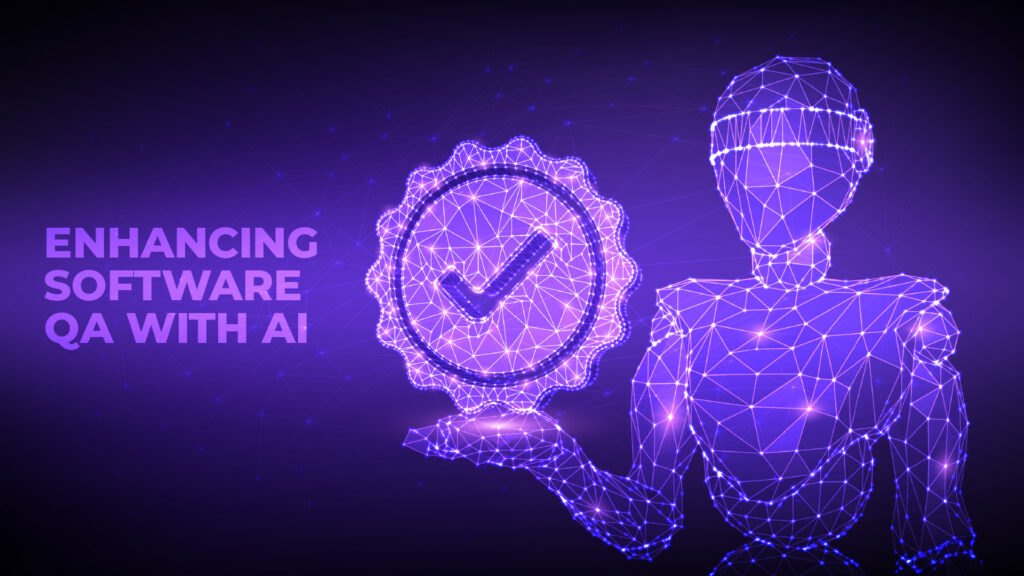
AI is not just transforming software development, but it is also profoundly changing the realm of Quality Assurance (QA). Embracing AI in QA promises improved productivity and shorter time-to-market for software products. In this blog I’ll outline some important use cases and outline some key challenges in adoption. We have also developed an ai-driven quality management solutions which you can check out. Primary Use Cases Subject Area and Business Domain Rules Application AI-driven testing tools make it easier to apply business domain specific rules to QA. By integrating domain-specific knowledge, such as regulatory requirements, privacy considerations, and accessibility use cases, AI can ensure that applications comply with the required industry standards. For example, an AI enabled testing platform can automatically validate an e-commerce website’s adherence to accessibility guidelines, ensuring that all users, including those with disabilities, can navigate and use the platform seamlessly. The ability to efficiently apply domain-specific (retail, healthcare, media, banking & finance etc.) rules helps QA teams address critical compliance needs effectively and reduce business risks. Automated Test Case Generation with AI AI-driven test case generation tools can revolutionize the way test cases are created. By analyzing user stories and requirements, AI can automatically generate the right test cases, translating them into Gherkin format, compatible with tools like Cucumber. For instance, an AI-powered testing platform can read a user story describing a login feature and generate corresponding Gherkin test cases for positive and negative scenarios, including valid login credentials and invalid password attempts. This AI-driven automation streamlines the testing process, ensuring precise and efficient test case creation, ultimately improving software quality and accelerating the development lifecycle. IQA provides flexibility and integration possibilities. User stories can be composed using various platforms like Excel spreadsheets or Jira, and seamlessly fed into the IQA system. This interoperability ensures you’re not tied down and can leverage the tools you prefer for a seamless workflow. AI for Test Case Coverage and Identifying Gaps One of the major challenges in software testing is ensuring comprehensive test coverage to validate all aspects of software functionality and meet project requirements. With the help of AI, test case coverage can be significantly enhanced, and potential gaps in the test case repository can be identified. For example, let’s consider a software project for an e-commerce website. The project requirements specify that users should be able to add products to their shopping carts, proceed to checkout, and complete the purchase using different payment methods. The AI-driven test case generation tool can interpret these requirements and identify potential gaps in the existing test case repository. By analyzing the generated test cases and comparing them against the project requirements, the AI system can flag areas where test coverage may be insufficient. For instance, it may find that there are no test cases covering a specific payment gateway integration, indicating a gap in the testing approach. In addition, AI-powered coverage analysis will also identify redundant or overlapping test cases. This leads to better utilization of testing resources and faster test execution. Challenges with Adoption Tooling Changes Integrating AI-driven tools into existing QA processes requires time for proper configuration and adaptation. Projects team, especially QA teams, will face challenges in transitioning from traditional testing methods to AI-driven solutions, necessitating comprehensive planning and training. Raising Awareness To maximize the benefits of AI in QA, both business and technology professionals need to familiarize themselves with AI concepts and practices. Training programs are essential to equip the teams with the necessary skills, reduce apprehension, and drive adoption of AI into QA. Privacy Concerns AI relies on vast amounts of high-quality data to deliver accurate results. It is crucial to preserve enterprise privacy. Where possible, providing data to public AI algorithms should be validated for the right guardrails. With private AI language models being made available, this concern should be mitigated soon. Conclusion AI is beginning to drive a big shift in software QA, improving the efficiency and effectiveness of testing processes. Automated test case generation, intelligent coverage analysis, and domain based compliance testing are just a few examples of AI’s transformative power. While challenges exist, the benefits of integrating AI in QA are undeniable. Embracing ai-driven quality management solution strategies will pave the way for faster, more reliable software development. Ignitho has developed an AI enhanced test automation accelerator (Intelligent Quality Accelerator) which not only brings these benefits but also brings automation to the mix by seamlessly setting up test automation and test infrastructures. Read about it here and get in touch for a demo.
Harnessing the Power of Generative AI inside MS Power BI
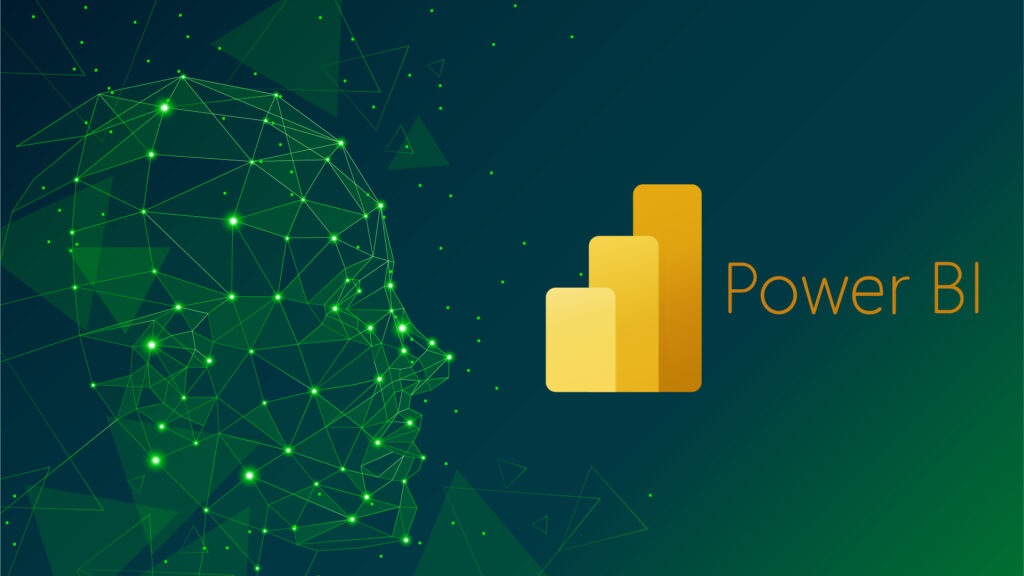
Data is everywhere, and understanding it is crucial for making informed decisions. Microsoft Power BI is a powerful tool that helps businesses transform raw data into meaningful insights. Now, generative AI capabilities are coming to MS Power BI soon! Watch this preview video Imagine a world where you can effortlessly create reports and charts in Power BI using simple text inputs. With the integration of Copilot in Power BI, this becomes a reality. In this blog post, we will explore the amazing features and advantages of Copilot enabled Power BI’s automated reporting. It has the potential to make data visualization and advanced analytics accessible to all end users without any detailed technical assistance. First, let’s take a look at the advantages, then we’ll review some potential limitations, and finally we’ll end with some recommendations. Advantages of Generative AI in MS Power BI Easy Report Creation With Power BI’s integration with Copilot, you can create reports simply by describing what you need in plain language. For example, you can say, “Show me a bar chart of sales by region,” and Power BI will generate the chart for you instantly. This feature makes it incredibly easy for anyone, regardless of their technical expertise, to create visualizations and gain insights from data. Time and Cost Savings As you can probably imagine, Copilot in Power BI significantly reduces the time and effort required to create reports. Instead of manually designing and creating reports, you can generate them with a few simple text commands. This not only saves time but also reduces costs associated with hiring specialized resources for report creation. You can allocate your resources more efficiently, focusing on data analysis and decision-making rather than report generation. Lower Bugs and Errors Arguably, human collaboration is not error free and they are likely to occur when manually creating reports. Misinterpreted instructions, typos, or incorrect data inputs can lead to inaccuracies and inconsistencies in the visualizations. However, with automated reporting such as with Copilot and MS Power BI, the chances of errors are significantly reduced. By leveraging natural language processing and machine learning, Power BI with AI can accurately interpret your text inputs and generate precise visualizations, minimizing the risk of bugs and inconsistencies. Enhanced User Self-Service There is already a trend in the industry towards enabling user self-service when it comes to business intelligence and reporting. CIOs and Chief Data Officers are opting to provide the foundations and let the business users slice and dice the data they want to. Now, the generative AI features in Power BI empowers users to become even more self-sufficient in creating their own reports. They can easily express their data requirements in simple language, generating visualizations and gaining insights without depending on others. This self-service capability enhances productivity, as users can access the information they need on-demand, without delays or external dependencies. Advanced Analytics for Causal and Trend Analysis One of the remarkable advantages of Power BI’s new capabilities is the ability to conduct advanced analytics effortlessly. You can use text inputs to explore causal relationships and trends within your data. For example, you can ask, “What could be driving the increased response rates for this promotion?” Power BI will analyze the relevant data and provide visualizations that highlight potential factors influencing the response rates. This allows you to identify patterns, correlations, and causal factors that might have otherwise gone unnoticed, enabling you to make data-driven decisions with a deeper understanding of the underlying factors driving your business outcomes. Limitations Even as the potential with Copilot in MS Power BI is fascinating, there are indeed limitations when it comes to a dynamic and ever-changing enterprise technology landscape. No Silver Bullet The generative AI capability is just being introduced. Given the complexities of an enterprise data landscape, and the fact that multiple data sources often come together to make end user reporting possible, we must plan for the rollout accordingly. For this reason, the next few sections on quality assurance, architecture, data quality and lineage are tremendously important to include in enterprise data strategy. Data Quality, Lineage, and Labeling The effectiveness of automated reporting heavily relies on the quality and accuracy of the underlying data. Inaccurate or incomplete data can lead to incorrect or misleading visualizations, regardless of the text inputs provided. It is crucial to ensure data quality by implementing proper data governance practices, including data lineage and labeling. This involves maintaining data integrity, verifying data sources, and labeling data elements appropriately to avoid potential confusion or misinterpretation. Quality Assurance (QA) Considerations While Power BI’s automated reporting feature offers convenience and speed, it is important to perform quality assurance to ensure the accuracy of the generated reports. Although the system interprets and generates visualizations based on text inputs, there is still a possibility of misinterpretation or inaccuracies. In addition, the data it runs on may itself be inaccurate or mislabeled. So, it is recommended to retain the safeguards in place for reviewing and validating the generated reports to ensure their accuracy and reliability. Reporting Architecture Requirements To maximize the capabilities of automated reporting in Power BI, it is essential to have a reporting architecture that is amenable to this feature. The data landscape needs to be set up in a way that allows seamless integration and interpretation of inputs to generate accurate and meaningful visualizations. This involves proper data modeling, structuring, and tagging of data sources to facilitate effective report generation through text commands. Recommendations To address these challenges above, especially for enterprises, it is recommended that we continue to use a Center of Excellence (CoE) or a shared service for Power BI Reporting Management and associated data strategy. This group can oversee the implementation and usage of these features, ensuring that generative AI improves outcomes for business users and drives overall business performance. The data team can be responsible for conducting regular QA checks on the generated reports, verifying their accuracy and addressing any discrepancies. It can also provide guidance and best practices for setting up
Integrating Google Analytics with Your Customer Data Platform (CDP)
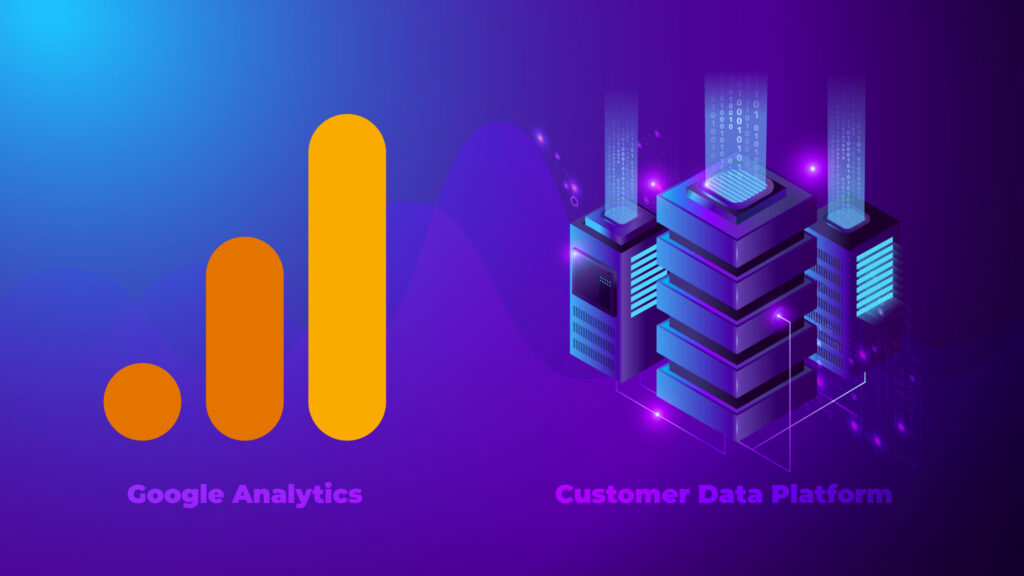
In this post, we’ll explain how you can and should integrate information from Google Analytics and access rich customer analytics from your Customer Data Platform (CDP). What are the benefits of GA4? The new Google Analytics 4 (GA4) is an improved tool that helps businesses understand their website and customer data better. GA4 brings advanced features such as built in predictive analytics such churn detection and purchase propensity among others. In addition, it offers a much more comprehensive approach to tracking and analyzing user data while reducing the reliance on cookie-based tracking. With GA4, businesses can delve deeper into user behavior, track multiple touchpoints across devices and channels, and gain a more holistic understanding of their customers. Do you need a CDP if you have GA4? While the new Google Analytics brings some exciting capabilities to the table, GA4 and a CDP are both serve different purposes. GA4 is a tool that tracks and analyzes data about how people interact with a website. It provides valuable information such as the number of visitors, their demographics, the pages they visit, and the actions they take on the site. This aggregated data helps businesses make informed trend-based decisions about marketing strategies, journey and website optimization, and customer engagement approaches. On the other hand, a Customer Data Platform (CDP) brings together customer information from different sources, one of them being GA4, to create a complete picture of an individual customer behavior. In other words, CDP helps you analyze a known customer, not just aggregate information. For that purpose, it allows for targeted and personalized sales and marketing approaches by combining data from various touchpoints, including website interactions, CRM systems, email marketing platforms, transactional systems and more. For example, imagine a clothing store that uses GA4 to track website visits and a CDP to store information about customers’ purchase and returns history. By doing integration of Google analytics (GA4) data with customer data platform (CDP), the store can see which website visitors later became customers, which other channels influenced it, and what products they bought. This helps the store understand which marketing strategies are working best and tailor their website content and promotions accordingly. As another example, let’s say a retailer integrates GA4 data with a CDP. They can then see which items are frequently viewed on their website and which ones are actually being purchased. With this information, they can optimize their marketing efforts by promoting popular items, tailoring their website content to match customer interests, and creating targeted email campaigns. By doing google analytics integration with customer data platform (CDP), businesses can centralize their customer data and gain a unified view of their audience. While GA4 does provide an option to integrate the data with Big Query for more advanced analytics, using a CDP helps businesses see a much bigger picture of their customers’ actions and preferences. What to do about Historical Data from Universal Analytics (GA3) Universal Analytics is the Google Analytics system that is being retired in July 2023 (in 2024 for GA360 customers). It is different from GA because it is based on sessions while GA4 is based on events. However, historical information can be valuable trend information that you do not want to lose. A typical advice is that you must maintain a separate dashboard for this historical data. However, Ignitho has developed a UA(GA3) to GA4 migration solution accelerator that does heavy lifting for you. It successfully maps information from UA to GA4. The biggest benefit is that you can have a unified dashboard instead of having 2 different reporting and analysis systems, especially for businesses who migrated late to GA4. Read more about how we map Universal Analytics to GA4 and sign up for a demo. Three Primary benefits of Using a CDP for GA4 Data It is recommended to integrate Google analytics (GA4) with a customer data platform(CDP) so that businesses can get a holistic view of their customers’ interactions across various touchpoints. It helps identify high-value customers, uncover behavioral patterns, and personalize marketing strategies to deliver relevant and engaging experiences. We should also be looking at the following as we think about the roadmap for our Customer Data Platform. Extensibility of AI models: Many off-the-shelf CDPs are very digital marketing heavy. They are great at processing clickstreams and email behavior, but they lack extensibility. Enterprises must look at the Customer Data Platforms that can easily handle and deploy additional use cases that can provide additional insights – e.g., the effect of high conversions during a time of day to final purchases and also returns. Infusing AI into BI Dashboards: As enterprises prioritize the use of AI, they are faced with several issues related to data quality and fragmentation. As a result, a significant amount of effort is spent in creating basic business dashboards that provide insights into the business and customer behavior. Using a CDP may be the right step to leapfrog this complexity and start designing for the future of how data will be used. By doing so, the traditional BI dashboards can be easily provided with insights from AI models thus enhancing business decision making. Last Mile Adoption of AI: While AI modeling is now very mature with the availability of data science tools and talent, the overall enterprise architecture is still lagging when it comes to integrating the insights with business applications. A CDP allows for AI insights to be available in real-time for integration with both customer and internal touchpoints. Check out Ignitho’s Customer Data Platform (CDP) accelerator built on the Domo platform. It has prebuilt AI models that make deployment of an enterprise grade CDP possible in as little as 2 weeks. It also makes it straightforward to realize the three benefits we listed above. Conclusion Integrating GA4 data with a CDP offers businesses a powerful way to gain valuable insights into customer behavior and improve marketing strategies. With GA4 providing detailed website analytics and a CDP consolidating customer data from various touchpoints, businesses can unlock a wealth
Transformative Role of AI in Custom Software Development
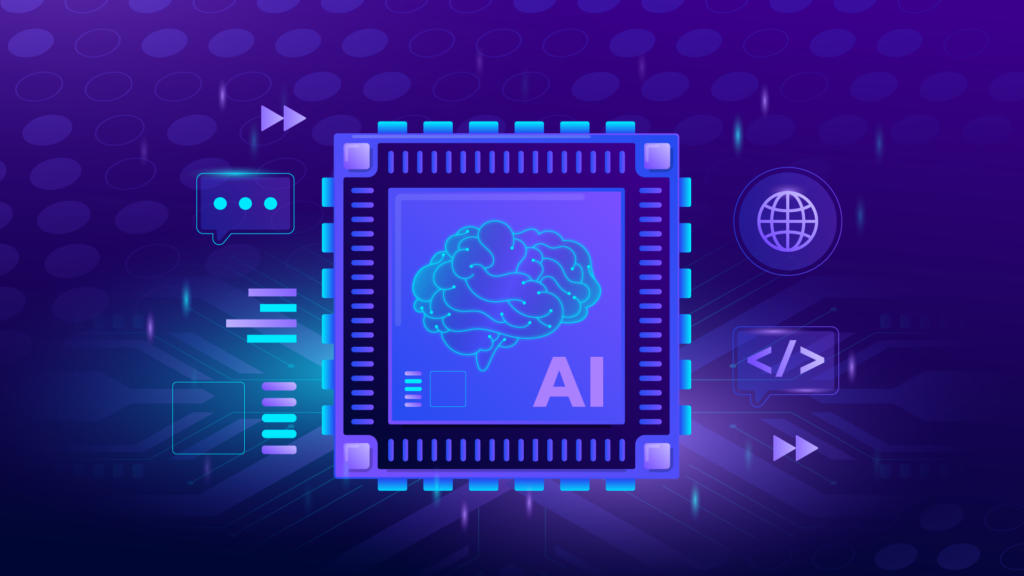
Welcome to the world of AI in custom software development. In this blog post, we will get into the impact of AI on custom software development in the enterprise. The emergence of artificial intelligence promises to revolutionize how we create applications and the larger business technology ecosystems. While AI brings the benefits of automated code generation and improved code quality, it is important to understand that there is still a critical place for human expertise in defining the application structure and overall enterprise tech architecture. Streamlining the Development Workflow First, let’s explore how AI can enhance the development process. This will: Create significant savings in mundane software development tasks. Empower developers to be more productive. It is common in every application development scenario where developers spend a significant amount of their time writing repetitive lines of code that perform similar tasks. We often call this software code as boilerplate code. These tasks could involve tasks like authentication, data validation, input sanitization, or even generating code for common functionalities such as calling APIs and so on. These tasks, although necessary, can be time-consuming and monotonous, preventing developers from dedicating their efforts to more critical aspects of the development process. Even today, accelerators like Intelligent Quality Accelerator (IQA), Intelligent Data Accelerator (IDA) and also shortcuts exist to generate all this automatically for developers. However, with the advent of AI-driven tools and frameworks, this scenario can be enhanced much further. The code generation is now context aware instead of just being code that needs to be customized. This will provide developers with a significant productivity boost. For example, let’s consider a developer who needs to implement a form validation feature in their application. Traditionally, they would have to write multiple lines of code to validate each input field, check for data types, and ensure data integrity. With AI-powered code generation, developers can specify their requirements, and the AI tool can automatically generate the necessary code snippets, tailored to their specific needs. This automation not only saves time and effort but also minimizes the chances of introducing errors. Thus, by leveraging AI algorithms, developers can streamline their workflow, increase efficiency, and devote more time to higher-level design and problem-solving. Instead of being bogged down by repetitive coding tasks, they can focus on crafting innovative solutions, creating seamless user experiences, and tackling complex challenges. The Importance of Human Expertise While AI excels at code generation, it is important to acknowledge that the structure of an application goes beyond the lines of code. Human expertise plays a key role in defining the overall structure, ensuring that it aligns with the intended functionality, architecture, and user experience. Consider a scenario where an organization wants to develop an application that processes customer returns. The application needs to have modules for managing customer information, tracking interactions, looking up merchandise and vendor specific rules, and generating reports. AI can assist in generating the code for these individual smaller modules based on predefined patterns and best practices. However, it is the human experts who possess the domain knowledge and understanding of the business requirements to determine how these modules should be structured and interact with each other to deliver the desired functionality seamlessly. Software architects or senior developers collaborate with stakeholders to analyze the business processes and define the architectural blueprint of the application. They consider factors like scalability, performance, security, and integration with existing systems. By leveraging their expertise, they ensure that the application is robust, extensible, and aligned with the organization’s long-term objectives. Since developing a software application often involves integrating it within an existing tech ecosystem and aligning it with the organization’s overall technology architecture, human input plays a critical role. Let’s consider another scenario where an organization plans to build a new e-commerce platform. The enterprise tech architecture needs to consider aspects such as the selection of the platform software, desired plugins, external database systems, deployment strategies, and security measures. While AI can help implement detailed software functionality, it is still the human architects who possess the expertise to evaluate and select the most suitable architecture that aligns with the organization’s specific requirements and constraints. Better Talent Management With AI assisting with custom software development, the management of skills and talent within an enterprise can be significantly improved. As developers are relieved from the burden of mundane coding tasks, they can focus on working at a higher level. That enables them to better leverage their expertise to drive innovation and solve complex problems. Let’s consider an example of an enterprise team tasked with integrating a new e-commerce platform into an existing system. Traditionally, integrating a new e-commerce platform would involve writing custom code to handle various aspects such as product listing, shopping cart functionality, payment processing, and order management. This process would require developers to invest considerable time and effort in understanding the intricacies of the platform. They would have to learn specific APIs and would have to implement much of the necessary functionality from scratch. However, with the aid of AI in code generation, developers can automate a significant portion of this process. They can leverage AI-powered tools that provide pre-built code snippets tailored to the selected e-commerce platform. This allows developers to integrate the platform into the existing system much faster. Thus, the integration of AI in custom software development not only improves productivity and efficiency but also alleviates the pressure of talent management and hiring within enterprises. As AI automates the base-level coding tasks, the demand for volume diminishes. AI helps make skills more transferable across different projects and reduces the need for hiring a large number of developers solely focused on low-level coding tasks. With AI handling the foundational coding work, this shift allows organizations to prioritize hiring developers with expertise in areas like software architecture, system integration, data analysis, and user experience design. Additionally, the adoption of AI-powered tools and frameworks enables developers to explore new technologies more easily. They can adapt their existing skill sets to different projects and platforms, reducing
Rethinking Software Application Architecture with AI: Unlocking New Possibilities – Part 1

In today’s rapidly evolving technological landscape, the integration of artificial intelligence (AI) is reshaping the way we develop and design software applications. Traditional approaches to software architecture and design are no longer sufficient to meet the growing demands of users and businesses. To harness the true potential of AI, we need to reimagine the very foundations of software application development. With our AI led digital engineering approach, that’s exactly how we are approaching software application development and engineering. In this blog post, we will explore how AI-enabled software application development opens up new horizons and necessitates a fresh perspective on architecture and design. We will delve into key considerations and highlight the transformative power of incorporating AI into software applications. Note: In this blog we are not talking about using AI to develop applications. That will be the topic of a separate blog post. This blog has 4 parts. Harnessing the Power of AI Models Transforming Data into Predictive Power Creating a Feedback Loop Evolution of Enterprise Architecture Guidelines and Governance We’ll cover parts 1 and 2 in this blog. Parts 3 and 4 will be covered next week. 1. Harnessing the Power of AI Models with APIs In the era of AI, software applications can tap into a vast array of pre-existing AI models to retrieve valuable insights and provide enhanced user experiences. This is made possible through APIs that allow seamless communication with AI models. Thus, a key tenet of software engineering going forward is the inclusion of this new approach of leveraging AI to enhance user experience. By embracing this, we can revolutionize how our software interacts with users and leverages AI capabilities. Whether it’s natural language processing, computer vision, recommendation systems, or predictive analytics, APIs provide a gateway to a multitude of AI capabilities. This integration allows applications to tap into the collective intelligence amassed by AI models, enhancing their ability to understand and engage with users. The benefits of API-enabled applications that can leverage AI are manifold. By integrating AI capabilities, applications can personalize user experiences, delivering tailored insights and recommendations. Consider an e-commerce application that leverages AI to understand customer preferences. By calling an API that analyzes historical data and user behavior patterns, the application can offer personalized product recommendations, thereby increasing customer satisfaction and driving sales. Applications also have the potential to dynamically adapt their behavior based on real-time AI insights. For example, a customer support application can utilize sentiment analysis APIs to gauge customer satisfaction levels and adjust its responses accordingly. By understanding the user’s sentiment, the application can respond with empathy, providing a more personalized and satisfactory customer experience. It follows that the data and AI strategy of the enterprise must evolve in tandem to enable this upgrade in how we define and deliver on the scope for software applications. In the next section, we will delve deeper into the concept of AI-driven insights and how they can transform the way we present data to users. 2. AI-Driven Insights: Transforming Data into Predictive Power With enterprises investing significantly in AI, it is no longer enough to present users with raw data. The true power of AI lies in its ability to derive valuable insights from data and provide predictive capabilities that go beyond basic numbers. By incorporating AI-driven insights into software applications, we can empower users with predictive power and enable them to make informed decisions. Traditionally, software applications have displayed historical data or real-time information to users. For instance, an analytics dashboard might show the number of defects in the past 7 days. However, with AI-driven insights, we can take it a step further. Instead of merely presenting past data, we can leverage AI models to provide predictions and forecasts based on historical patterns. This predictive capability allows users to anticipate potential issues, plan ahead, and take proactive measures to mitigate risks. AI-driven insights also enable software applications to provide context and actionable recommendations based on the data presented. For example, an inventory management application can utilize AI models to analyze current stock levels, market trends, and customer demand. By incorporating this analysis into the application, users can receive intelligent suggestions on optimal stock replenishment, pricing strategies, or product recommendations to maximize profitability. Furthermore, AI-driven insights can be instrumental in optimizing resource allocation and operational efficiency. For instance, in a logistics application, AI algorithms can analyze traffic patterns, weather conditions, and historical data to provide accurate delivery time estimations. By equipping users with this information, they can plan their operations more effectively, minimize delays, and enhance overall customer satisfaction. Next steps In this blog, we introduced the concept of AI-enabled software application development and emphasized the need to rethink traditional architecture and design. It is important to leverage AI models to modify behavior and engage users effectively. Additionally, applications must go beyond raw data to provide predictive capabilities. These insights empower users and enable informed decision-making. Moving forward, in the next blog post, we will delve into parts 3 and 4, which will focus on the feedback loop between applications and AI models for enhancing user experience and enriching the data store, as well as the evolution of enterprise architecture guidelines and governance in the context of AI-enabled software application development. Stay tuned for the next blog post to learn more about these crucial topics.
Role of AI in Unlocking the Full Potential of Customer Data Platform
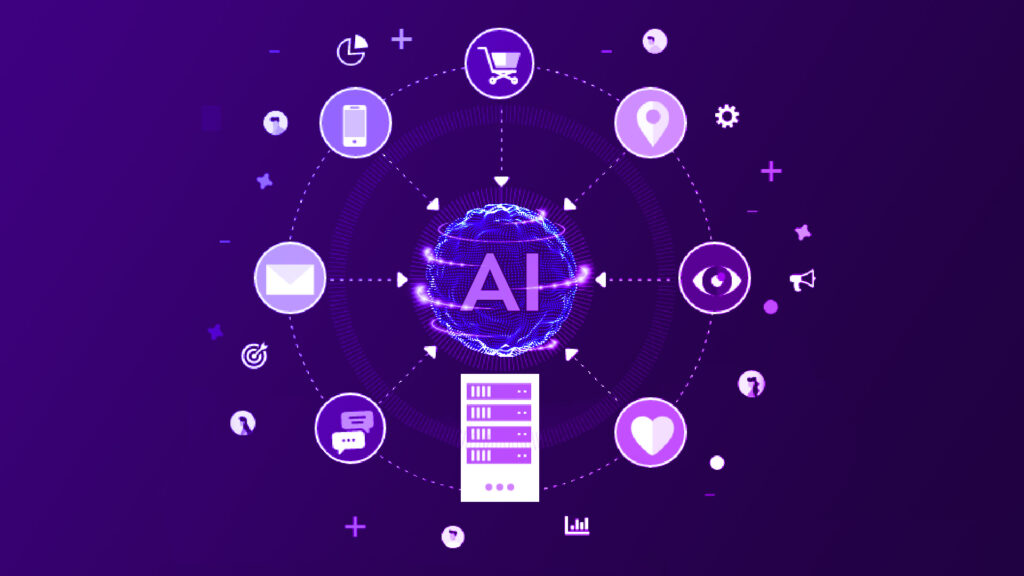
Customer Data Platforms (CDPs) have become integral to modern businesses, empowering them to collect, analyze, and utilize customer data effectively. However, the integration of artificial intelligence (AI) has emerged as a game-changer to fully unlock the potential of CDPs. By leveraging AI, we can extract invaluable insights from vast amounts of customer data to enable personalized marketing strategies and improve customer experiences. AI is also integral to Ignitho’s CDP accelerator that enables you to deploy a CDP with prebuilt AI models and full API access in as little as 2 weeks. In this blog, we explore the role of AI in unlocking the full potential of CDPs. By leveraging AI, we can extract invaluable insights from vast amounts of customer data to enable personalized marketing strategies and improve customer experiences. Enhancing Customer Segmentation (CDP) with AI Customer segmentation has emerged as a core capability of CDPs. It is crucial for businesses to tailor their marketing efforts and deliver personalized experiences. By integrating AI in customer data platforms (CDP), businesses can take dynamic customer segmentation to the next level. AI algorithms can process and analyze massive datasets, identifying patterns and correlations that might be missed by manual analysis alone. This allows for more accurate and granular customer segmentation, resulting in targeted marketing campaigns and improved conversion rates. As a result, AI-powered customer segmentation enables businesses to go beyond traditional demographic and psychographic factors. By analyzing behavioral data, such as browsing history, purchase patterns, and social media interactions, AI can uncover hidden insights about customer preferences and intent. This deeper understanding of customers facilitates the creation of hyper-personalized marketing strategies that resonate with individual preferences, boosting customer engagement and loyalty. Ignitho’s CDP accelerator is customized for different sectors such as media agencies, media publishers, and retailers. It uses Domo connectors to quickly connect with a wide variety of technology systems, pulling the right data into the CDP to enable this segmentation. The data blueprint is pre-defined and enables rapid initial implementation. Predictive Analytics for Anticipating Customer Needs: Traditionally, businesses have relied on historical data to make informed decisions. With AI integrated into CDPs, predictive analytics enhances this dramatically. AI can identify trends, patterns, and anomalies within customer data, enabling businesses to anticipate customer needs and behavior. Some common use cases that come to mind are to predict future customer actions, such as churn, purchase likelihood, and product preferences. These predictions empower businesses to proactively engage with customers, offer personalized recommendations, and address concerns before they escalate. For instance, retailers can leverage AI-powered predictive analytics (CDP for retail) to recommend relevant products to customers leading to higher conversion rates and customer satisfaction. Note: Ignitho’s CDP accelerator addresses this problem of last mile adoption of AI insights by connecting the models using APIs into the required business systems – whether homegrown or packaged. So, clients can focus on utilizing AI rather than trying to figure out ML ops (machine learning model training, deployment etc.) There are several other use cases for predictive analytics for both marketing as well as customer service. We can optimize marketing campaigns by determining the most effective channels, timing, and messaging. AI can also look at past transactions and service data to recommend actions that customer service reps should take to help customers, and even prevent incoming service requests through proactive and automated action. For example, we implemented an AI model for a client to quickly project the impact of a price increase on the likelihood of customer churn. not a novel use case, the proposed architecture to quickly connect the models via APIs in real time to the customer engagement systems was a game changer. This data-driven approach enhances overall business performance and maximizes ROI. Sentiment Analysis for Enhanced Customer Insights Understanding customer sentiment and feedback is crucial for businesses to improve their products, services, and overall customer experience. AI helps unlock valuable insights from customer data through sentiment analysis. AI-powered sentiment analysis algorithms can analyze customer feedback in a variety of ways – the way they click through, what content and offers they respond to, their reviews, social media interactions, and customer service interactions. This massive data processing capability allows us to gauge customer sentiment accurately. By automatically categorizing sentiments, businesses can execute tests at scale, and monetize previously untapped areas for improvement. With AI-driven sentiment analysis, businesses can also augment both conversion and retention metrics. By identifying negative sentiments or issues promptly, companies can take immediate action to address concerns, rectify problems, and prevent potential customer churn. This proactive approach showcases a commitment to customer satisfaction and helps businesses retain loyal customers. Additionally, AI-powered sentiment analysis can uncover sentiment trends across different customer segments, geographic locations, or demographic groups. By understanding the sentiment variations among different customer groups, businesses can create real time personalized campaigns that resonate with each segment, driving higher engagement and conversion rates. Conclusion: The role of AI in Customer Data Platforms (CDP) is that of a game changer. AI unlocks the full potential of customer data by providing advanced customer segmentation, predictive analytics, and sentiment analysis capabilities. As we embark on our data lake and CDP journey, we should keep AI front and center in program planning discussions. Even if you feel that you need to tackle data strategy first, you should consider how the architecture with AI would look like before you make IT investment decisions. Take a look at our data platform (CDP) accelerator to see how AI can be included in traditional Business Intelligence / dashboarding programs, and how it will provide an API gateway for last mile adoption. Also know more about ai based cdp in retail industry.
Best Practices for a Successful Customer Data Platform (CDP)
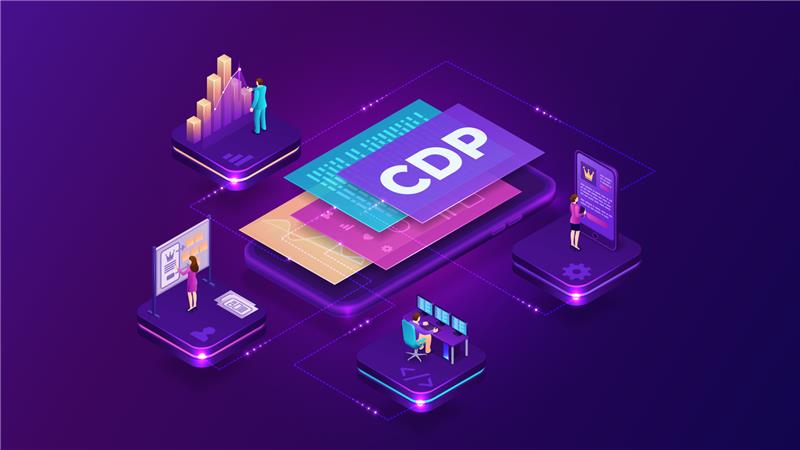
Understanding the Role of a Customer Data Platform (CDP) A Customer Data Platform (CDP) project is not simply a data aggregation and dashboarding program. It is also not a different kind of DMP where the only difference is that data is aggregated and anonymized instead of being segmented by customer. In this blog, we will bring out some key characteristics of a CDP and will outline 3 best practices of CDP that will help you define and successfully implement a robust CDP for your enterprise. In today’s digital age, businesses are collecting an enormous amount of customer data from various sources, including website analytics, social media, customer interactions, and more. However, the challenge is to make sense of all this data and derive meaningful insights that can be used to improve customer experiences and drive business growth. This is where a Customer Data Platform (CDP) comes in – it’s a tool that can help businesses unify and organize their customer data and provide actionable insights. Do You Need a CDP? The first step in deploying a CDP is to decide if you need one. Some of the primary criteria for this are: Your AI models and business intelligence are siloed and don’t talk to each other. E.g. You cannot easily perform what-if analytics based on AI outputs. Your AI insights are not easily operationalized or used by your business applications Your AI insights are not integrated in real time with your business applications These needs are more than just requiring a consolidated database for customer segmentation and installing reporting and dashboarding tools. So, in short, if you have data silos, disconnected customer experiences, and a lack of actionable insights integrated in real time, then a CDP is right for you. Otherwise, you should proceed with deploying a nice reporting and dashboarding tool. Key Best Practices of CDP: Identify the Key AI and Business Intelligence Use Cases A CDP program should be action led. In contrast, a data lake program is data led where the priority is to feed it everything we can get. A CDP on the other hand must start with the actionable outcomes we want to drive. We should start by defining the business objectives and the specific insights we want to derive from the customer data. This will help us identify the key use cases that the intended CDP should support. For example, in a retail or digital business, we may want to understand our customers’ purchasing behavior, preferences, and motivations. This could involve analyzing data from various sources, such as purchase history, browsing behavior, demographic data, and social media interactions. In addition, we may want to uplift promotion effectiveness, improve cross sell rates, reduce cart abandonments, etc. By identifying the key use cases, we can ensure that the CDP provides the necessary functionality and features to support our business objectives. Defining the use cases first also ensures that we have a clear blueprint for our data needs. It makes it easier to then run a discovery program across the enterprise to see how best those data needs can be met. Engaging Stakeholders: Collaboration and Buy-In It is natural that defining the use cases needs active engagement of various stakeholders to secure buy-in and collaboration. That’s because deploying a CDP is a business initiative that requires collaboration and buy-in from stakeholders across business units from marketing, sales, customer service, technology, and others. It’s essential to engage stakeholders early on in the process to ensure that the benefits case for the CDP is sound. Even though the initial scope may be small, we are likely not going to build multiple CDPs over time. So, by involving multiple stakeholders and following a design thinking approach, we can ensure that the planned CDP is scalable enough to meet future needs as can be reasonably defined. This will also help build a sense of ownership and accountability for the success of the CDP deployment. Identify Data Sources and Existing Tech Landscape Existing tech landscape and data sources are crucial to consider. For example, we may need to analyze the maturity of the data lake, if any, to determine if it can be used as the base for the data in the CDP, or whether multiple data integrations will be needed. Additionally, it’s important to consider how to migrate from or leverage existing visualization tools. This may involve integrating the CDP with existing BI tools or migrating to a new platform that complements the CDP’s capabilities. Since AI is an important driver of the CDP, the technology landscape for AI and machine learning operations should also be evaluated. Traditionally, enterprises have used isolated tools to create and train their AI models, and then run into challenges with making the insights available in real time. That’s because hosting of the AI models and making them available in real time needs a separate platform. In addition, integration of the insights with the reporting tools for active what-if analysis must be considered. Thus, in our opinion, if possible, the target CDP technology should be evaluated for simplifying this AI operational model as well. Doing this well will have a big impact on how well AI is integrated with various business applications. It’s important at this time to recognize the critical role that IT plays in deploying a CDP. Multiple IT teams will be responsible for ensuring the security, scalability, and reliability of the CDP infrastructure. They will also be instrumental in defining the data fabric necessary for the CDP. Therefore, it’s important to collaborate closely to ensure that the CDP meets their enterprise architecture strategy and is compatible with the existing IT infrastructure as much as possible. Integrated AI Capabilities: Enhancing Insights and Real-Time Integration A common mistake is to think of a CDP just as a highly segmented data store for customer data. That results in decisions that prevent the AI, BI, and last mile integration of insights to come together well. Therefore, using a traditional enterprise BI tool on top of a segmented datastore